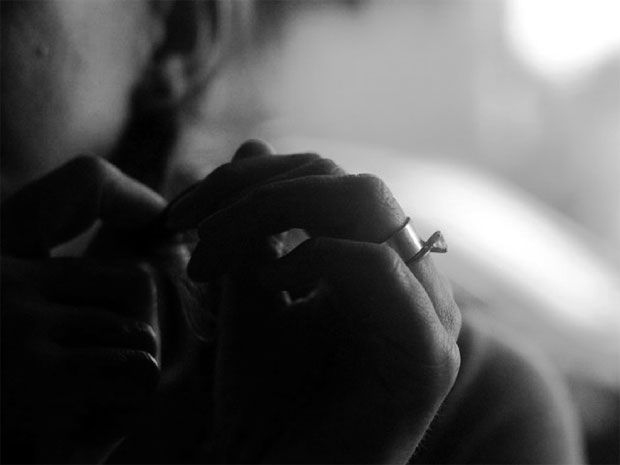On pocket symphonies and ear candy.

I agree with Rob Walker: Radiolab is a beautiful thing. An experiment in auditory aesthetics (kind of Fluxus-y), its unique sounds are seductive. I want to listen over and over and over, because the producers painstakingly create “musical gestures” that elicit visions and emotion:
Listen more closely to a “Radiolab” episode, and once you get past the cutting up and the jumpiness, you’ll notice just how intricate the underlying soundscapes are. Consider the second segment of the “Lost and Found” episode, about pigeons’ freakish sense of direction. In its most sciencey passage, Tim Howard, the reporter, presents an explanatory theory from an expert described as “a heavy hitter in the pigeon world.” It goes like this: Churning iron in the center of the earth throws off lines of magnetic force; a pigeon flies through the lines and can perhaps “feel them” by way of particles of magnetite in its beak. During my visit, Abumrad listened to a minute-long edit of this passage with Howard and Wheeler. “Do you know Alvin Lucier’s ‘Music on a Long Thin Wire’?” he asked Howard when it ended. “I’ll play it for you.” He had an idea for the sound — not a sound effect, and not music, but a “musical gesture” — to play against the dialogue. “The sound’s going to be going bruup bruup bruup,” he told Howard, advising him to take the pigeon’s point of view. “It’s moving — fhewm, fhewm — through bands, some are thick, some are thin. You know? That’s the part where it’s gonna feel very visual.” Ultimately, it took him and Howard hours to construct the track, using the audio-editing program Pro Tools, and a bunch of audio filters.
Authenticity and transparency are also important factors in creating auditory beauty:
This is how “Radiolab” addresses the tension between authenticity and artifice: capturing raw, off-the-cuff moments (or trying many times to get them right) and editing them in a gripping pastiche. The hope, Abumrad said, is to preserve the sense of excitement and discovery that often drains away in the authoritative accounts of traditional journalism.
and
“It’s consciously letting people see outside the frame,” Abumrad suggested. “I think those moments are really powerful. What it’s saying to the listener is: ‘Look, we all know what’s happening here. I’m telling you a story, I’m trying to sort of dupe you in some cosmic way.’ We all know it’s happening — and in a sense we all want it to happen.”
And an example of when the “A” and the “D” are added to STEM (Science, Technology, Engineering, Math):
I asked Abumrad what a traditional radio producer would make of his meticulously constructed bruup bruup fhewm fhewm. “They would say it’s insane,” he said. Early on, he had to deal with “radio people” who thought he was wasting time on “artsy-fartsy namby-pampy” technical distractions. “But do you want to know why ‘Radiolab’ has worked beyond public radio?” he asked. “Because it sounds like life. You watch TV, and someone has labored over the feel. Look at ‘Mad Men’ or ‘The Sopranos’: the mood, the pacing, the richness of it, comes from those fine, quote-unquote technical choices.”
Radiolab is to traditional audio what Jane Jacobs was to Greenwich Village. Life is unstructured. People are messy. But structuring, designing, curating, and mixing the unstructured on a transparent, human scale can be beautiful.